Checking or changing the engine’s oil is a routine for every car owner. However, you will be surprised one day when you discover that the engine oil cap won’t come off. Why does this happen? It could be frustrating and annoying. But don’t fret! We have done the legwork to research the reasons behind it and find ways to resolve it.
The engine oil cap gets stuck due to the following conditions:
- It has been too long since the last oil change
- Hot engine
- Gunk buildup
- Wear and tear
- Overtightening
Here are ways to solve the above problems:
- Get your oil changed regularly
- Wait for the engine to cool down
- Apply ice to the cap if the car engine is hot
- Oil cleaning and lubricants
- Apply engine degreaser or brake cleaner
- Use tools to untighten, such as the engine oil cap remover, strap wrench, vice grips, and channel lock pliers
The routine of checking the car’s engine oil is crucial for safe driving. However, one thing that can hinder this maintenance routine is when the engine oil cap gets stuck. This post will dig deep into the underlying causes and offer helpful guides to solve this problem. Read on!
Why Engine Oil Cap Gets Stuck And Ways to Resolve It
Can your car’s engine function normally if the oil cap won’t come off? If it gets stuck or refuses to open, here are the possible reasons and their corresponding solutions:
It Has Been Too Long Since The Last Oil Change
Car owners know that oil should be changed every 3,000 miles or every 3 months. This schedule can vary due to certain factors, such as vehicle age, the quality of oil used, and driving habits, among other things.
However, it is quite common that many car owners lose sight of the importance of this routine engine oil change for a variety of reasons.
If too much time goes by in between oil changes, the oil gets rancid, and a layer of burnt oil will form at the cap, thus making it hard to remove.
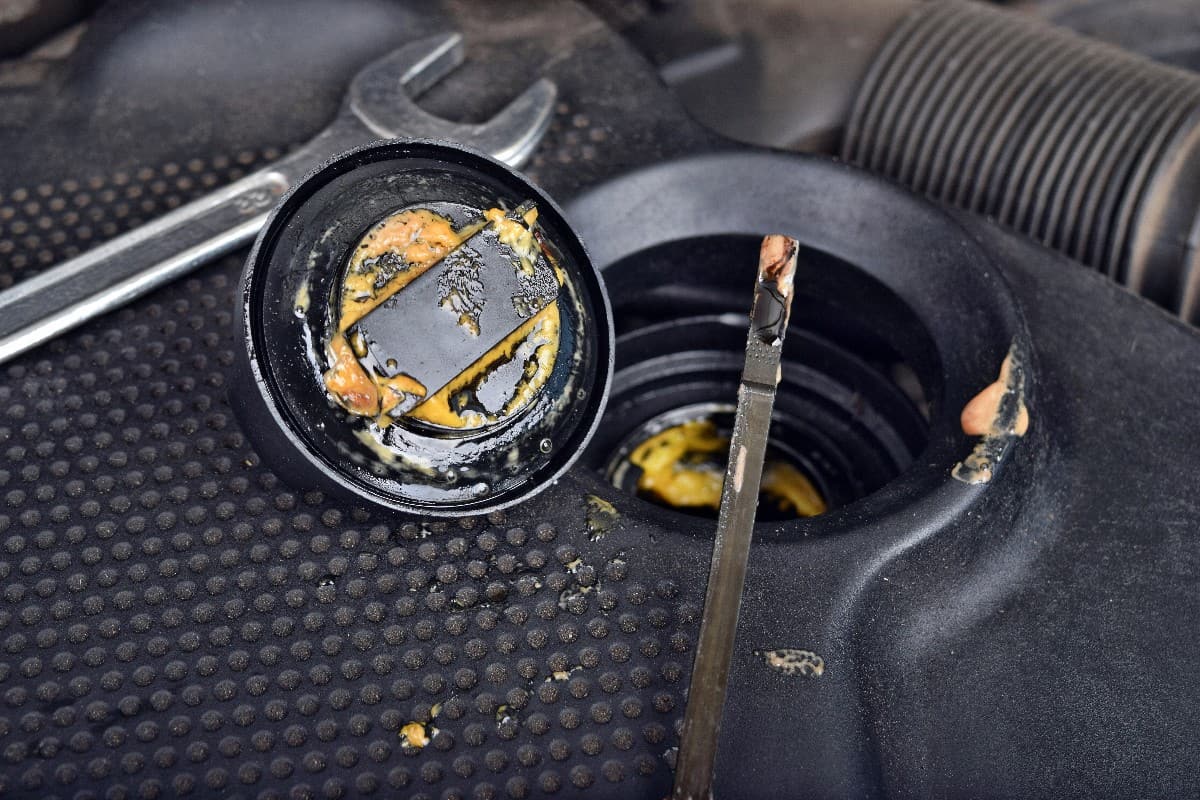
The solution to this problem is a regular oil change as preventive maintenance. This will prevent the buildup at the oil cap that prevents it from getting stuck.
To provide more insights on engine oil, these posts are worth reading:
Why Do Cars Need Oil? [And What Happens If You Don't Change Oil]
Hot Engine
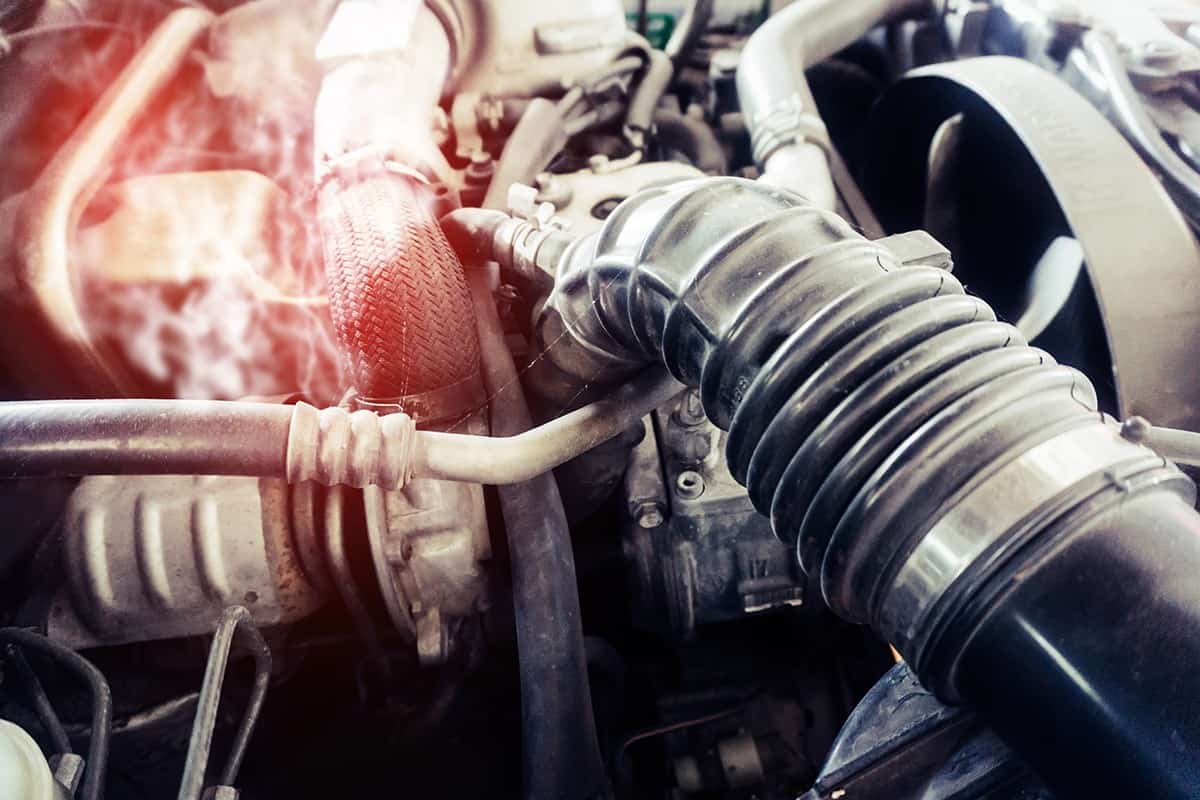
When the car is running, the engine remains heated. Sometimes the engine is still hot even long after you have turned it off. As long as the engine is at a high temperature, it is a hazard. If the cap is loosened, hot oil will gush out, which may cause serious burns to the mechanic or driver.
The solution to this problem is to wait for the engine to cool completely. Then apply lubricant. This is further explained in a separate section below.
In rare instances that you can't wait for the engine to cool down, take brake cleaner and spray it over the cap. The evaporation will cool the cap enough to loosen it.
You need to know more about how hot vehicle engines can get by reading these posts:
How Hot Does A Motorcycle Engine Get?
Are Car Engines Supposed To Get Hot?
Gunk Formation
The engine oil cap’s design has grooves that make it fit snugly into its space. The grooves also control the circular motion when the cap is turning.
However, this design can easily harbor unwanted residues such as gunk and dirt. These can easily build up, especially when a routine oil change schedule isn't maintained. The engine's heat can also be a contributing factor.
The solution to this problem is to remove the gunk and dirt. This is further explained in a separate section below.
Wear And Tear Of Oil Cap
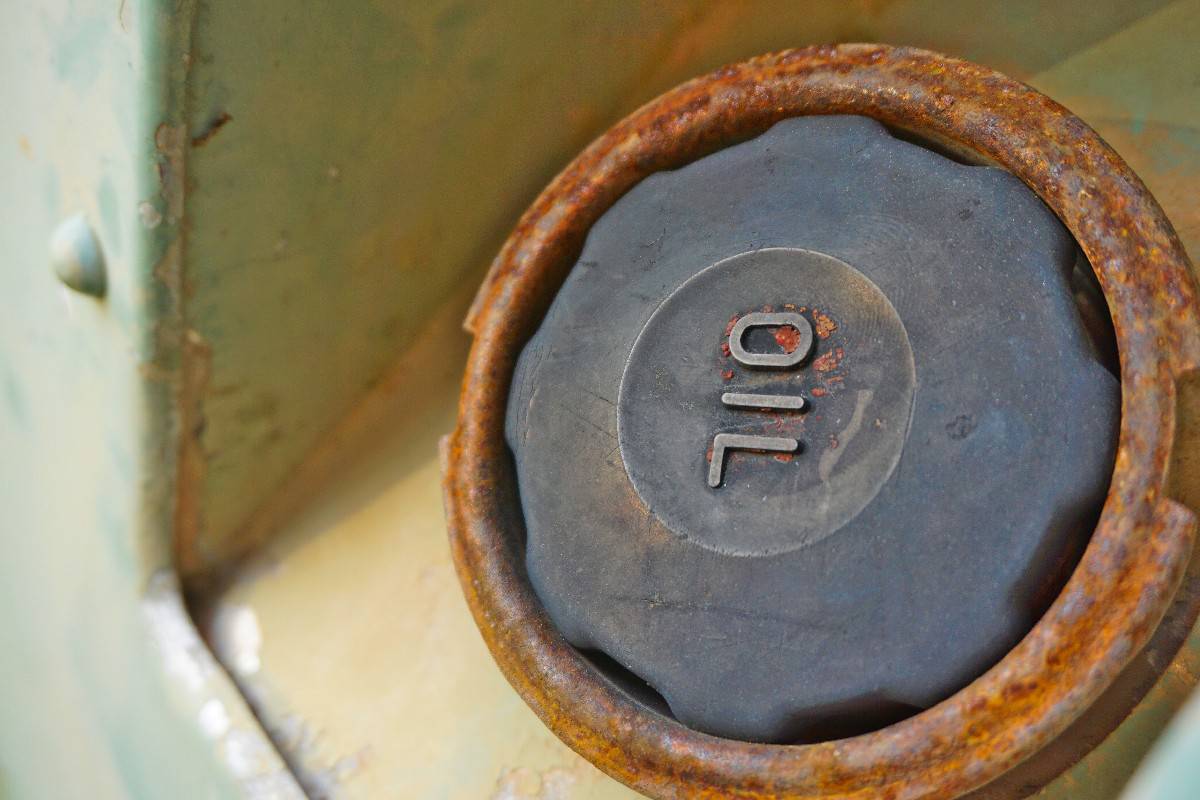
One of the signs of wear and tear on the engine oil cap is rust formation. Since oil caps are made of metal and iron, rust is inevitable. This is also triggered due to the cap’s exposure to moisture and oxygen. Since the cap is shut while rust is forming, then it will remain stuck.
Some oil caps of some car models have teeth. Due to prolonged use and friction of opening and closing, the teeth show signs of wear and tear. There will be irregular teeth that will make the cap difficult to open and close.
The solution to this problem is to apply lubricant or engine oil around the cap's opening. The steps in the application are further explained in the succeeding section.
Overtightened Cap
Overtightening of the engine oil cap is one cause often overlooked. It's all too easy to overtighten the cap to the point where it is hard to remove.
Some oil cap designs have a ratcheting mechanism, similar to a gas cap, to prevent overtightening. There are instances when this mechanism fails and the cap gets tightened. When this happens, the top of the cap gets separated from the threads, leading to further damage. You might need a full replacement of the cap.
Using your bare hands to untighten is cumbersome and, more often, painful. There are numerous tools to help you untighten the cap.
Tools To Untighten Oil Cap
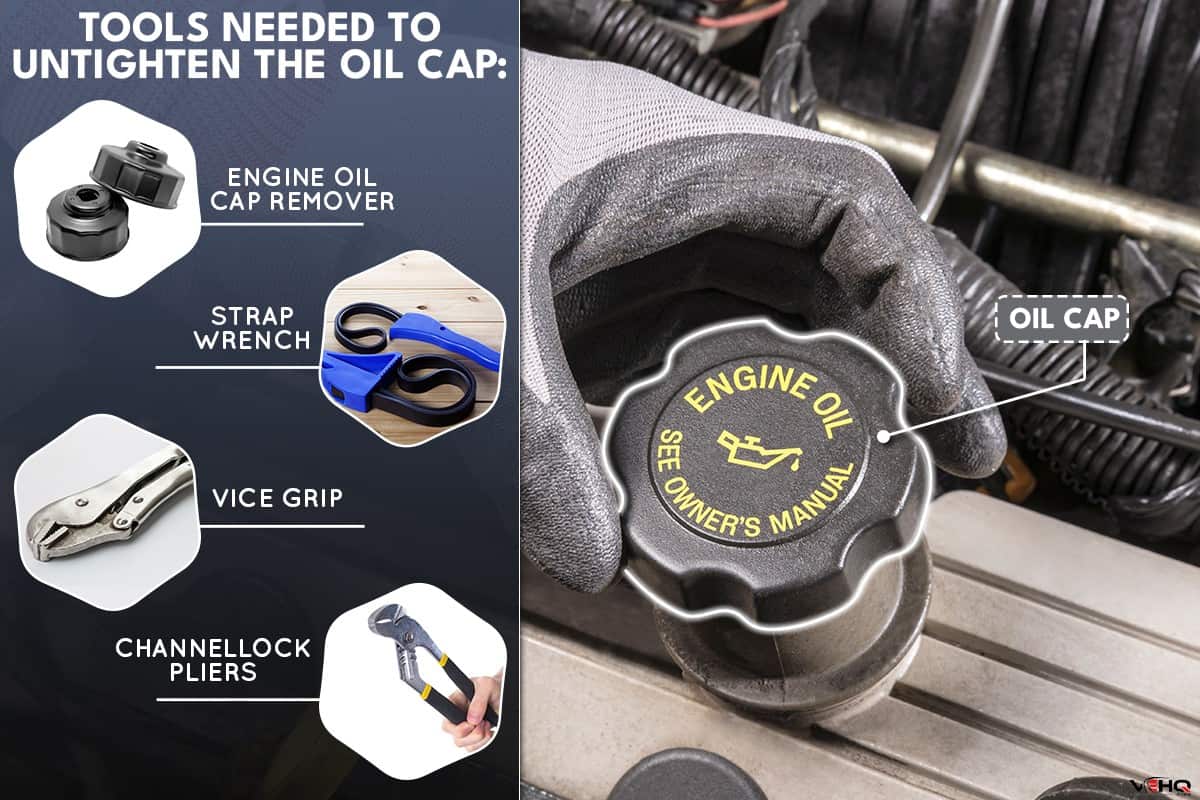
Your car's toolbox contains must-have tools to help you solve this problem.
- Engine oil cap remover
Ensure that the engine is warm. Place a rag over the cap. Position the cap remover over it, then twist it off. The rubber gasket will effect a suction lock to loosen the oil cap. Use a dual-sided universal oil cap removal tool. Each car engine model has its corresponding type of oil cap remover. Check your owner's manual.
- Strap wrench
Check out this strap wrench on Amazon.
A strap wrench is made of aluminum with an adjustable diameter, making it flexible enough to fit any engine oil cap size. It is ergonomically designed in its handle for easy use.
- Vice grip
Use a pair of vice grips while the cap is wrapped in a shop rag. Don't tighten the vice grip too much, but just enough to keep it from slipping. With the force of torque and the long handle of the vice grip, you can loosen the overtightened cap. This is far less painful than doing it with your bare hands.
Check out this vice grip on Amazon.
- Channellock pliers
If you have exhausted the tools above, channel lock pliers are the last resort. You can break the cap off using channellock pliers, but it doesn't damage the nozzle. Be sure you have a replacement cap ready.
Channellock is a brand name belonging to the water pumps or slip-joint pliers.
Check out these Channellock pliers on Amazon.
Can You Open The Oil Cap When Engine Is Hot?
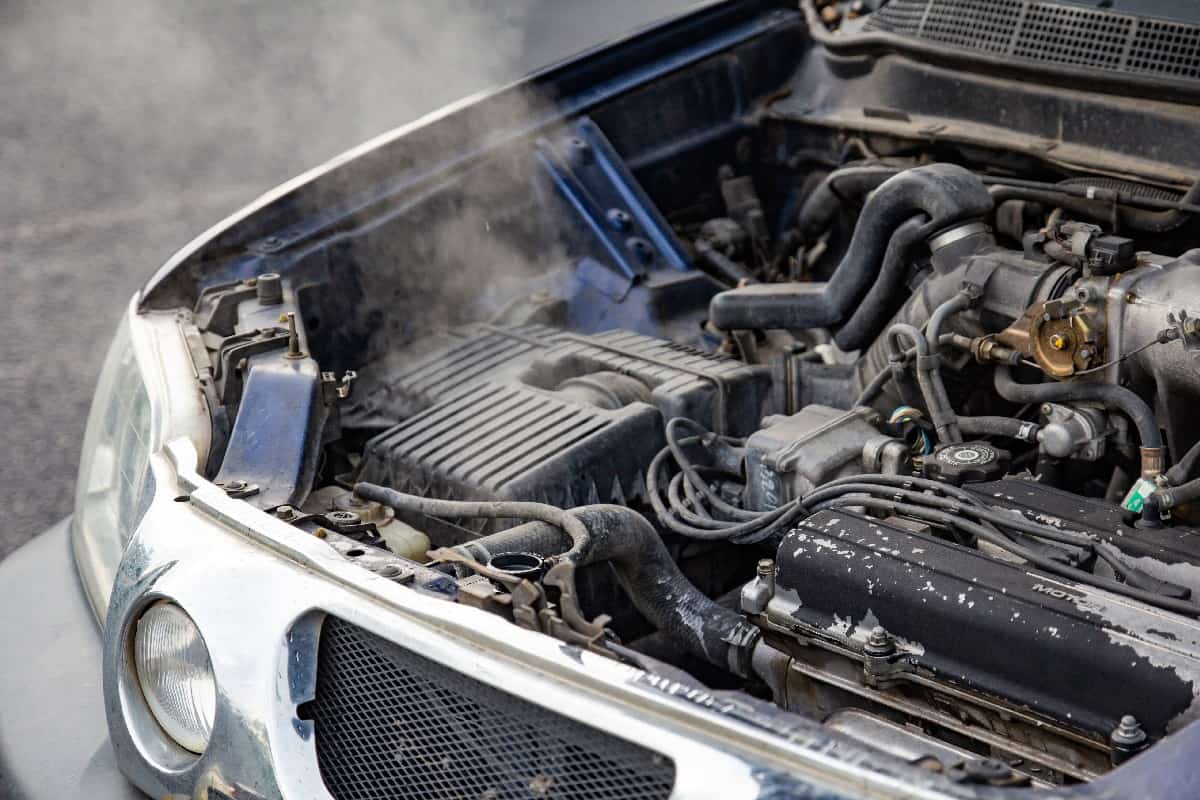
Often, in the middle of your long drive, you may need to add oil to your engine. And it would be best to add oil to a hot or rather warm engine.
Hence, you can open the oil cap when the engine is hot. When doing so, place a sandwich bag full of ice over the cap. Let it sit for around five minutes, and the cap will loosen.
How To Apply Lubricant Over Stuck Engine Oil Cap
Lubricant is a go-to remedy when the engine oil cap doesn't come off smoothly. Any mechanical lubricant will suffice for this purpose. It provides sufficient fluid texture, and the oil cap should come off as it normally should.
Another method of applying lubricant is dumping it over a shop rag. Rub it over the cap and let it sit for a few seconds. With the rag, twist the cap until it loosens. The rag gives a firm grip to aid your bare hands over the stuck oil cap.
How To Remove Gunk On Oil Cap Rims
As previously mentioned, accumulated gunk over the rims can cause the oil cap not to rotate smoothly when opened or closed. The remedy is to remove this gunk and dirt. Better still, implement a scheduled maintenance cleaning to avoid buildup.
Pour a small amount of engine oil over the area covered with gunk—that is, the grooves, crevices, and threads. With a toothpick, an old toothbrush, or a cleaning brush with medium-hard bristles, you can work on cleaning the cap. You can clean the nozzle as well.
If there is a heavy gunk buildup, dab a rag with gas to loosen the gunk.
Another good alternative to engine oil and gas is applying an engine degreaser. It has the same method of application.
Check out this engine degreaser on Amazon.
You might be interested to read more on cleaning engine gunk:
Is Gunk Engine Degreaser Safe On Aluminum, Plastic, And Paint?
In Closing
Don’t get frustrated when your engine oil cap doesn’t come off. Be patient, and with the solutions outlined in this post, you can easily remove the cap.
Prolonged engine oil, the hot engine, gunk and rust formation, and overtightening are the culprits of oil cap sticking.
Observing correct engine oil change intervals can make the oil cap operate smoothly. Preventive maintenance, which includes cleaning gunk and rust and applying lubricants and degreasers can prevent the cap from sticking.
And lastly, an engine oil cap remover, vice grips, and channel-lock pliers are your must-haves in your toolbox to aid you in untightening the engine oil cap.




